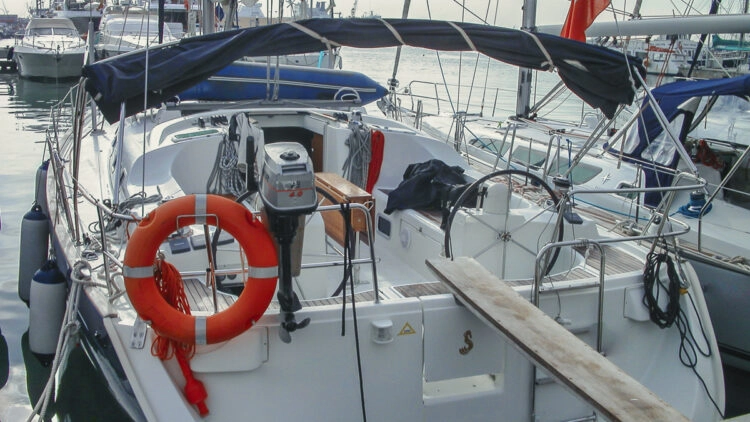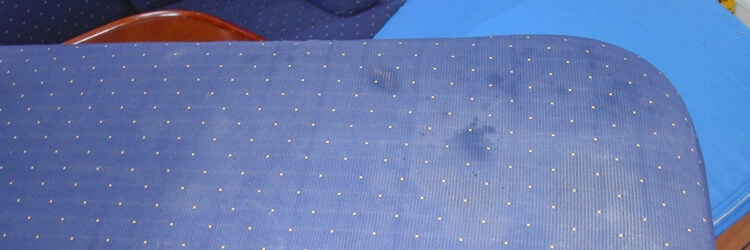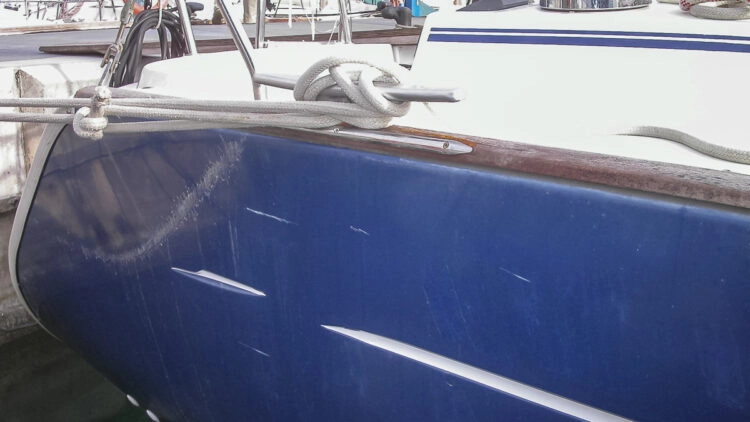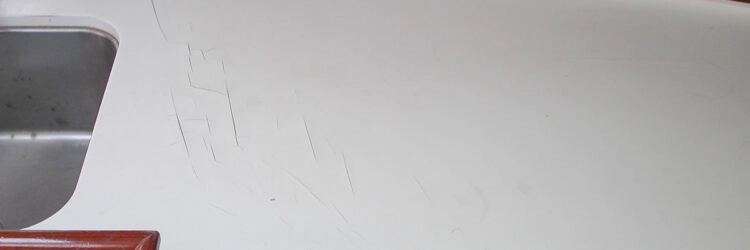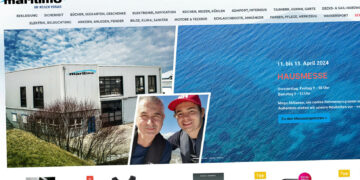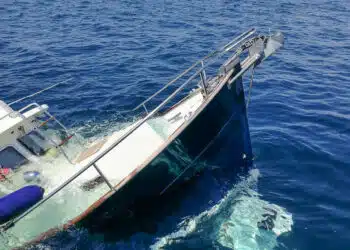There she lies, the booked dream yacht. The spacious cockpit faces the jetty, the hatch is open. Now only bags and provisions have to be put on board the charter yacht and off we go, right? Before skippers and crew enthusiastically cast off the lines of the charter yacht they have chartered for the trip, it is important to make a good handover with the charter company or the agency in charge. It’s just like moving into a new apartment or vacation home. It is not only a matter of detecting and recording minor damage, but also of getting to know the boat in its entirety so that nothing can go wrong at sea.
SeaHelp extra tip: Carry out the handover of the charter yacht as conscientiously as if you were renting an expensive, luxury apartment. Otherwise, in the event of a dispute, you will be held liable for damages or lost items that one of the previous crews is responsible for. Only then it’s their deposit that the charter company will be liable for.
Conscientious delivery of the charter yacht
So it happens that the day of arrival can be much more stressful and bureaucratic than the vacation-hungry skipper craving turquoise waters and a gentle breeze expects. But it is worth insisting on a conscientious introduction on board the charter yacht and a neatly kept handover protocol. This is a legally binding document to which all parties can refer when returning the charter yacht.
However, one should not forget that the day of the handover is also a real stress day for the employees in the charter base: Usually it is the case that on Friday evening the charter yachts come back to the base, the old crew still spends the night on board and has to clear the field by 09:00. After that, the charter yachts have to be made ready for the next crew within a few hours. And while crew A still has the yacht explained to them, crew B already appears and wants to get their yacht as soon as possible and start their charter vacation.
SeaHelp extra tip: If you notice that the charter employee is running out of time and has to hand over one charter yacht after the next in piecework, ask him to hand over another yacht first and check their charter yacht alone in peace. You can ask questions afterwards when the situation is less stressful.
Document everything in writing
Even if you feel very petty: Always record all damages in writing and have the record signed by one of the charter staff:in. The verbal statement of the agency, the damage is already known, is not enough – especially if you face another employee when returning the charter yacht.
Get to know the technical intricacies of the charter yacht
The main goal of the handover is to familiarize the skipper with all the technical details of the yacht.
Important: Let them show you that everything actually works. So do not just nod knowingly when the charter base employee points to the switch with the bilge pump, but also operate it. If there is the familiar sucking-gurgling sound, everyone knows that the pump is working. And if it doesn’t, now is still the time to have it repaired directly at the charter base. This is much less nerve-racking than finding out during the trip what is wrong and then having to organize a complicated repair.
Even if experienced sailors often have the feeling that they already know everything and that most of the systems on board the charter yacht are “self-explanatory” – a good introduction helps to get to know even hidden levers and clamps that deviate from the “scheme F” of the currently common charter models.
Inquiries welcome!
If it goes to the technology, the switchboards in the navigation and above all the engine, so some layman’s head buzzes from the many technical terms and information, which pelt on one from the experienced personnel of the base. Dare to ask questions, try things out, and above all, ask if there is an easy-to-understand written manual for the yacht that will remain on board. This “board book” is best kept in the navigation, along with the ship’s papers and insurance policy, which must be shown at most ports when clearing in.
First the handover, then the luggage
Even if the crew can hardly wait to finally drag bags and purchases on board the charter yacht and to furnish the floating vacation home comfortably – the luggage only comes on board after the handover has been completed. Otherwise the heavy sea bag stands exactly on the baking box, which must be folded up, in order to get the change from one gas bottle to the other explained. And the first full supermarket bag blocks the door to the refrigerator, so that no one notices that some leftovers of the previous crew still remain here.
It is better, skipper:in and co-skipper (four eyes see more than two!) do the handover in peace, alone with the service staff. And when all questions are clarified and all checkmarks are set on the checklist, the crew can board the ship. In the meantime, the Mitsegler:innen can already buy generously for the upcoming trip in the nearest supermarket.
Is the household complete?
Who takes over a charter yacht, gets a complete floating household – accordingly, it must be checked before the start of the trip, whether everything that was promised in the brochure, is also on board. Are all seat cushions there, fenders complete, tarpaulins to cover the cockpit available and the zippers intact? Is the kitchen equipped so that you can go on tour with the yacht and also cook on board? Even if on many yachts only the starter set of a large Scandinavian furnishing multinational is available in the galley: If a large pot for cooking pasta, sharp knives, can openers or a kettle are missing, this can affect the vacation quite a bit.
Document external damage
This part of handing over the charter yacht reminds a bit of taking over a rental car, only this time you are not standing on a hot parking lot hoping that the check will be over quickly, but in a – summery warm – marina you are looking strained at the ship lying in the water, trying to spot and document all the small quirks and damages on the hull and deck. Even if they are only small gelcoat chips that catch the eye: They have to be recorded in the handover protocol so that you don’t have to pay for repairs all at once. It’s always easy to say, “That’s the way it was,” but it’s hard to prove without a corresponding entry in the protocol.
SeaHelp Extratip: Especially in the stern, where the gangway attaches, check for damage, as well as the area of the bathing platform, where the bathing ladder is attached. Equally susceptible to minor damage are the bowsprit or even the pulpit, which clearly indicates with characteristic deformations, where it was once a little too tight. If the crew includes a good diver, the keel, rudder and propeller should be submerged to check if a previous crew had a grounding.
Start the engine
To check the electrical systems and see if all the lights go, the anchor can be lowered as desired, or even the electric swim platform can be unfolded without a problem, the engine must be started. Turn the key yourself and do not leave this task to the service staff – after all, you will be underway with the charter yacht for the next few days and will initiate all maneuvers from the helm. Also, have them show you all the fuses for the onboard systems and how to change them if necessary. In addition, know where the sometimes well-hidden battery master switch is.
SeaHelp Extratip: Be sure to ask the length of the anchor chain and check whether the markings on the chain, usually applied at 5-meter intervals, are correct and the end of the chain is secured. It is also important to know if the yacht’s depth sounder is showing the correct water depth and where the transducer is located.
Check the sails
It is not always possible to pull up the sails in the marina and see if they have a small tear or torn leech. Once the marina is in the wake and fenders and lines are stowed, all sails should be hoisted once to check their condition. When recovering, you can immediately test whether furling genoa and main can be properly stowed again without much effort.
Dinghi not forgotten
Nothing is more annoying than when the small outboard of the dinghy does not start despite a final check during the handover in the marina and you have to row after all. Good, if you then at least at the handover has made sure that suitable oars are on board. Also part of the standard equipment of a small inflatable boat is a spare canister with funnel and a pump in case air escapes from the hoses.
SeaHelp Extratip: Even if it’s just a dinghy… All defects must be recorded in the log, missing seat boards just like torn out eyelets for the tow line.
Check fuel gauge
The engine is running, the gauges for coolant and fuel light up. Now it is important to read exactly how much diesel is left in the tank. Usually charter yachts are handed over with a full tank and should be returned that way. Every liter that is missing when the yacht is returned will be meticulously noted by the staff of the charter base and refilled – often at prices for which one would normally buy other fine wines. In the same way, the yacht should be handed over with water tanks full to the brim.
SeaHelp Extratip: Have someone show you and another crew member how to switch from one water tank to the other, and try out all the showers and taps – including the deck shower, which will be one of the highlights on board for everyone who comes back on board via the swim platform.
Technical Comfort Zone
Most charter yachts are equipped with an autopilot, which allows the skipper to take his hands off the wheel and relax at times. Even if most systems are “self-explanatory” – it does no harm to have the functionality explained again during the handover. This can be tested at the berth to see if the rudder moves when the autopilot is on.
Modern yachts offer a lot of comfort at the push of a button. If the ship is equipped with electric toilets, there is no need for instruction on which valve to open for disposal. But even if the subject is a little unsavory: ask the local knowledgeable staff of the charter base when, how and where the holding tank can be taught.
Check rescue supplies
Hopefully you never need them…but good to know where everything is. Be sure to check that there are enough life jackets on board for the whole crew in the appropriate (children’s) sizes, that the automatic vests have a fresh maintenance stamp, and that the tablet and cartridge are intact before starting the cruise.
SeaHelp Extratip: Pay attention to the inspection date of the life raft!
Ready! Cast off
It rarely happens that the charter yacht booked is not ready to go or the charterer finds so many defects during the handover that the cruise seems unfeasible. Mostly it is small things that are documented or criticized. If the table in the salon has a thick water stain, you just don’t want to be held responsible for it yourself. But this blemish does not prevent you from casting off and setting sail. It’s the same with minor gelcoat damage, rust stains, or slightly torn cupholders or winch handle pockets.
But if the engine does not start, the tap water remains cold or the ship designed for eight people has only two wine glasses, then you may already grumble at the handover. Many problems can be solved directly on the base quickly and easily. So that nothing stands in the way of a relaxed charter vacation.
With the SeaHelp charter pass carefree on your charter vacation
Protect yourself and your crew for the duration of your charter trip with the SeaHelp charter pass! We are there for you if there was a slight grounding, they have an accident, the fuel is all or a line is caught in the propeller. More information can be found here.


